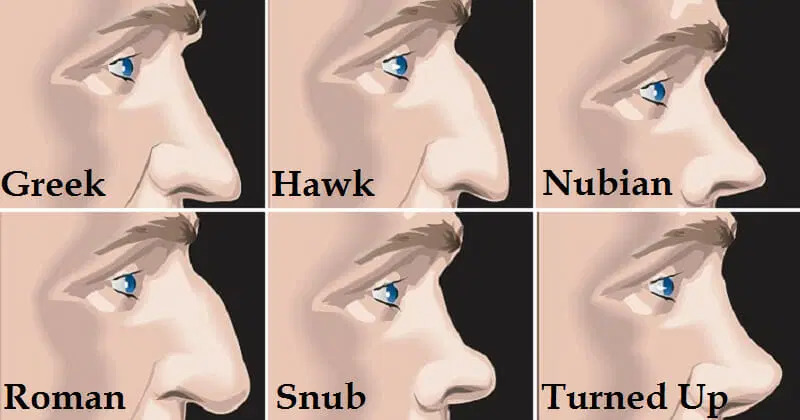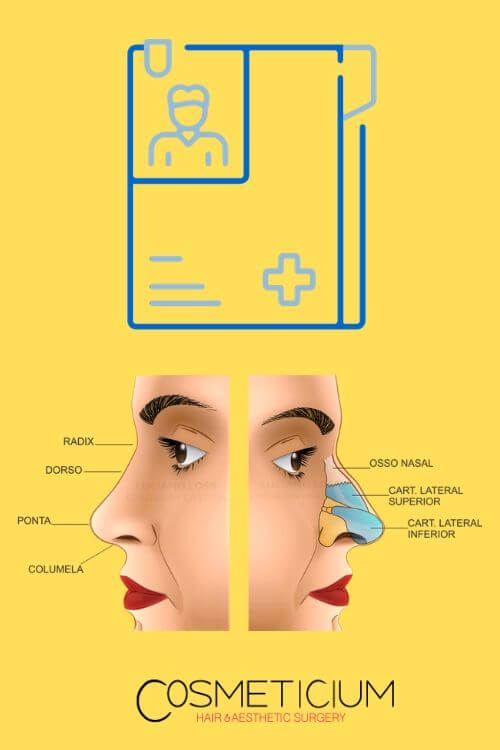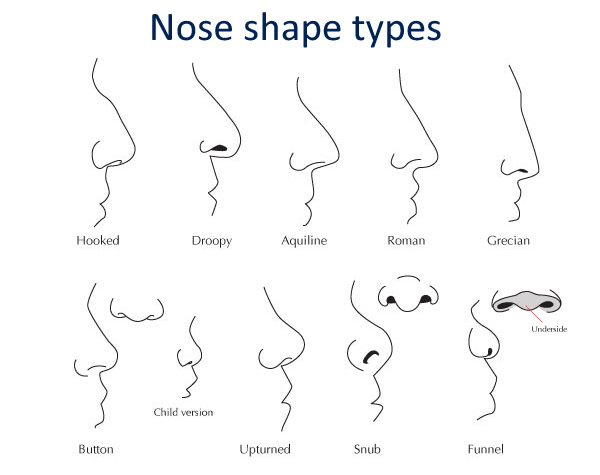Table of Contents
Different Nose Shapes: A Comprehensive Guide
Introduction
The human nose, a central feature of the face, significantly influences our appearance. Its shape and size contribute to our unique facial structure, and it’s fascinating to note that there are numerous different nose shapes. This article will delve into the various nose shapes, their unique characteristics, and how they can be enhanced or modified.
Understanding Different Nose Shapes
The Fleshy Nose
The fleshy nose job, the most common nose shape globally, is characterized by its large, protruding shape with more fatty portions than bony ones. Approximately 25% of the world’s population possesses this nose type.
The Turned-Up Nose
Also known as the celestial nose, this nose shape is small in size with a dent in the middle of the bridge and a protruding lobule or tip. It is considered one of the most appealing nose shapes.
The Hawk Nose
The hawk nose, named for its resemblance to the curved beak of an eagle, has a dramatic curved shape and a prominent bridge. This nose shape often contributes to a stronger personality and a more significant face shape.
The Greek Nose
The Greek nose, also known as the straight nose, is characterized by a remarkably straight bridge without any humps or curves. Only about 3% of the population has this nose shape.
The Roman Nose
The Roman nose, named after its resemblance to ancient Roman sculptures, is characterized by a sloping curve that prominently protrudes from the face. The exaggerated bridge is often slightly bent or curved, and it is usually found in people with a strong, bold, and defined profile.
The Bumpy Nose
The bumpy nose is another common nose shape worldwide. These noses have a bumpy outline, followed by a subtle or prominent curve in the dip.
The Nixon Nose
The Nixon nose, named after the 37th president of the USA, is characterized by its straight bridge, which curves at the end with a broader tip. It is a rare nose shape, according to research.
The Bulbous Nose
The bulbous nose is characterized by a rounded and curved tip, which protrudes differently, creating a bulbous, circular silhouette at the bottom of the nose.
The Combo Nose
The combo nose is a unique nose type. It’s not a nose shape on its own but a mixture of all kinds of noses, combining the components of different noses to create a unique silhouette.
 The Snub Nose
The Snub Nose
The snub nose is defined by its distinctive thin and pointed look. It features a tinier, slightly rounder silhouette with a subtle upward slope at the tip. Only 5% of the population has this nose type.
The Nubian Nose or African Nose
The Nubian nose features a long bridge with a wide base. It’s also known as a wide nose. Mostly, Africans have this type of nose.
The East Asian Nose
East Asian noses are usually slim, flat shaped, and have a shorter tip. It’s the most common nose type in East Asia.
Nose Surgery: Enhancing Your Nose Shape
Nose surgery, or rhinoplasty, is a procedure that can help modify the shape of your nose to enhance your facial aesthetics. It can address concerns like wide nostrils, an overly bulbous or hooked nasal tip, nasal asymmetry, unsuitable nostril position or width, or a broken nose from earlier trauma.
Rhinoplasty
Rhinoplasty surgery can reshape and straighten your nose, improving its overall appearance.
Tip Rhinoplasty
Tip rhinoplasty can contour the end of your nose or improve a bulbous nose tip, giving your nose a more refined look.
SeptoplastySeptoplasty is a surgical procedure that can help improve your breathing and fix a deviated septum, enhancing both the function and appearance of your nose.
Alarplasty
Alarplasty, or nostril surgery, can narrow a wide nose and improve nasal flare, leading to a more balanced facial appearance.
Turbinoplasty
Turbinoplasty, or turbinate reduction, can improve your airway and breathing, enhancing your overall comfort and health.
Types of Rhinoplasty Surgeries
Reduction Rhinoplasty
Reduction rhinoplasty is a surgical procedure that reduces the size of the nose. It can target specific areas such as bumps, humps, or the nose tip, achieving a more balanced and harmonious facial profile.
Post-Traumatic Rhinoplasty
Post-traumatic rhinoplasty is performed on patients who have had accidents or injuries that affected the nose. This surgery helps restore the normal shape of the nose and correct any functional issues such as breathing problems or snoring.
Augmentation Rhinoplasty
Augmentation rhinoplasty is performed on patients who have a small nose, often due to genetic issues or damage to the cartilage of the nose. This surgery increases the general proportions of the nose, enhancing the facial profile.
Corrective Rhinoplasty or Revision Rhinoplasty
Corrective rhinoplasty, also known as revision rhinoplasty, is performed on patients who are not satisfied with the results of their initial nose surgery. This surgery corrects any issues or flaws that occurred after the first surgery.
Reconstructive Rhinoplasty
Reconstructive rhinoplasty is performed when the problem is a medical issue. It helps to restore damaged or lost tissue, often due to reasons such as cancer treatment, accident, or injury.
Refinement Rhinoplasty
Refinement rhinoplasty is performed to reshape the tip of the nose. This surgery can make your nose sharper and pointy, or enhance the roundness of the nose, significantly changing your facial appearance.
Preparing for Nose Surgery
Proper preparation for nose surgery is crucial for successful results and faster recovery. This includes maintaining a healthy diet rich in fiber and vitamins, taking prescribed medications, arranging for someone to drive you home post-surgery, and avoiding certain medications that may interfere with anesthesia.
Conclusion
Understanding the different nose shapes and the surgical options available can help you make an informed decision about whether nose surgery is right for you. Whether you’re considering a minor adjustment or a significant change, it’s essential to consult with a specialist plastic surgeon to ensure the best possible outcome.
FAQs
How to contour different nose shapes?
How to draw different nose shapes?
What are the different nose shapes?
Why are noses shaped differently?
How many different nose shapes are there?
What should I eat before and after rhinoplasty?
Is rhinoplasty a major surgery?
Is rhinoplasty painful?
How long does it take to recover from rhinoplasty?
Can rhinoplasty change the shape of my nostrils?




